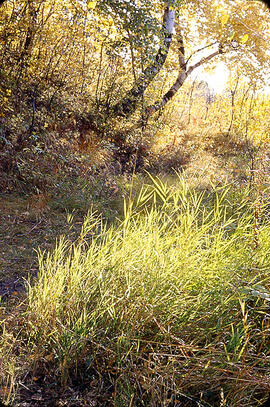Ashlayers exposed in pit - near Ludent crater
- WOK 10-146
- Item
- 1960
Part of W.O. Kupsch fonds
Ashlayers (rhyolitic, white, and basic, black) exposed in pit. From bottom to top. Hekla 4 (4000 years ago, white with black), Hekla 3 (about 2700 years B.P., white), Hverfjall (about 2500 B.P., basic volcanic ash), laxa (about 2000 B.P., basic). Near Ludent crater. August 4, 1960.

